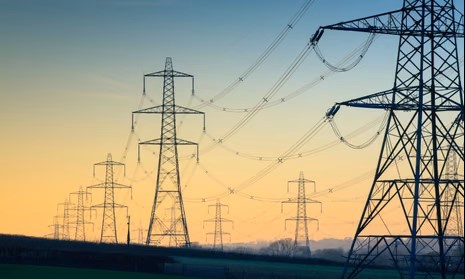
Why Is UK Energy Supply So Expensive?



Both UK regulators and utility companies are facing a surge in electricity and water demand, driven in part by the rapid rise of AI-powered technologies. Generative AI tools require significantly more energy and cooling resources to keep data centres operational.
For example, in Scotland, there are currently 16 operational data centres, with more planned in the near future. Most of these data centres rely on “open-loop” cooling systems, which require a continuous mains water supply – adding further strain on local utilities.
At a national level, building new energy infrastructure continues to drive bills higher. In 2025 alone, the UK Government has spent approximately £1 billion curtailing wind generation and paying for gas-fired power to fill the gap. That “wasted” clean electricity could instead be redirected to meet growing data centre demand.
The real challenge lies in creating markets and incentives that encourage capital-rich AI companies to invest in energy infrastructure where it is most needed.

Network operators run auctions where power generators bid to supply electricity. However, these auctions often fail to fully consider the grid’s physical limits. As a result, a wind farm may win a contract to produce power, only to be told to stop due to grid congestion – while another generator is simultaneously paid to supply electricity instead.
By 2030, this inefficiency is estimated to cost the UK up to £8 billion annually. That wasted electricity could power data centres, fueling the country’s digital economy.
Just as steelworks once clustered near coal and iron during the Industrial Revolution, modern data centres – the new energy-intensive infrastructure sector – should be located where clean energy is abundant and affordable. Currently, UK network planning offers little incentive to make this happen.
There are two main reasons:
Encouraging energy use where supply is strongest – such as locating data centres near Scotland’s surplus wind power – could transform some of Europe’s most expensive electricity into some of the cheapest.

The short answer: not yet.
Energy systems are built around decade-long planning horizons, assuming operators can design the “perfect” grid. Large language models and other AI technologies were not on anyone’s radar until recently. While markets can adapt quickly, regulated grids usually cannot.
Even before AI, certain areas in the UK struggled to expand housing due to power capacity limitations. With AI’s massive energy requirements, we are barely at the starting line. Without significant investment, the availability of AI may soon outpace our ability to supply the required electricity.
Currently, we lack both the necessary infrastructure and the economic signals to use existing resources more intelligently or guide where new capacity should be built.
The solution lies in creating markets where capital can be deployed. This enables developers to build and use infrastructure independently, rather than waiting for regulated entities to decide what’s possible.
Across the EU, energy has traditionally been run on centralised government plans – plans that were already struggling. These plans cannot cope with AI-driven demand.
What’s needed are stronger price signals – prices that vary by location and time – so businesses and entrepreneurs can identify:
Yes. Grid-scale battery costs have plummeted, and further declines are expected as more efficient battery chemistry is produced at scale.
However, regulators and utilities often chase “simple” solutions, like gas, rather than embracing hybrid approaches combining solar, wind, and battery storage. Addressing this challenge requires regulatory reform and sustained effort.
We are at a critical point: reforming energy regulation could provide citizens with cheaper electricity, more generation, and the ability to build homes, data centres, and factories currently held back by power shortages.
In summary, the rising cost of UK energy is not just a result of supply shortages but also of outdated infrastructure and misaligned regulations. As AI and other high-demand technologies continue to grow, the need for smarter, location-aware energy planning has never been greater. By embracing market-driven solutions, investing in modern infrastructure, and leveraging renewable energy and storage, the UK can create a more efficient, affordable, and sustainable energy system – powering both homes and the digital economy of the future.
Services (UK/International)